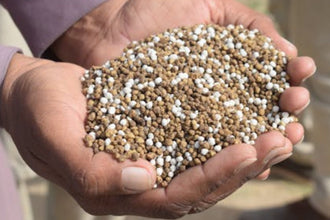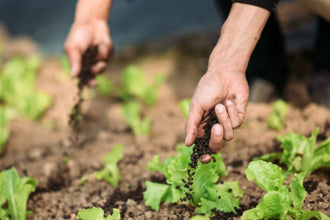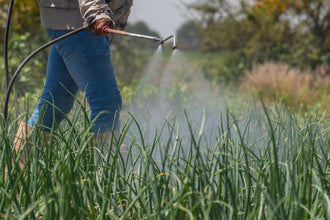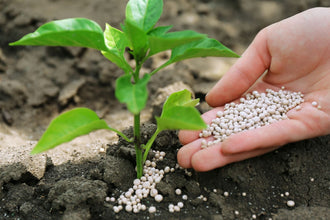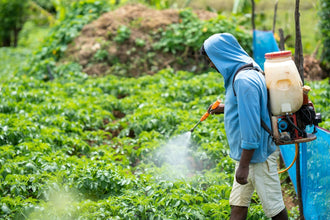Are you ready to transform that little patch of land into a thriving, green oasis? Backyard gardening is an enjoyable and rewarding hobby that not only enhances the beauty of your home, but also provides fresh and nutritious fruits, vegetables, and herbs, all while reconnecting with nature.
In this guide, we will introduce you to the essentials of backyard gardening, equipping you with the knowledge and tools necessary to start your very own garden. No prior experience or a green thumb is required - all you need is enthusiasm and a little bit of guidance!
Understanding Your Garden
Before delving into backyard gardening, a crucial initial step is understanding your own space and its unique conditions. This process involves evaluating several key factors that significantly impact plant health and growth.
Assessing Your Backyard Space: Soil Type, Lighting, and Water Availability
Within your garden, each plant has distinctive requirements for:
- Soil type: Start by determining if your garden soil is loamy, sandy, or perhaps clay-like. Different soils influence water drainage and nutrient availability, therefore affecting which plants will thrive. Conduct a soil test for an in-depth understanding of its nutrient content and pH level.
- Sunlight: Observe your garden's lighting conditions. How many hours of sunlight does your garden receive daily? Are there spots that remain in full or partial shade? These factors will affect plant photosynthesis and growth, and it's important to remember that some plants require full sunlight while others manage in partial sunlight or shade.
- Water availability: Review your water sources. Consistent and adequate watering is vital to successful backyard gardening. While rainwater is ideal, it may not be sufficient, making additional watering necessary. Convenient access to a water source ensures that plants maintain their hydration needs.
Choosing the Right Plants for Your Climate and Soil
Equipped with your garden assessment, the next step is to research and select plants that are well-suited to your specific conditions. Look into plants that thrive in your local climate and soil type.
Native plants are often an excellent choice as they're inherently adapted to local conditions. Additionally, consider regionally appropriate, non-invasive exotic plants which can add variety while being resilient to local weather and soil type.
Successful backyard gardening is largely about cooperating with nature rather than challenging it. Opting for plants suitable for your specific environment increases your garden's chances of flourishing, while also simplifying the overall care and maintenance required.
Starting your Garden
Venturing into backyard gardening necessitates key operational steps. From sketching a garden layout to acquiring needed tools, each phase impacts the future success of your garden.
Planning Your Garden Layout
Creating a garden layout involves meticulous planning. An effective layout considers not only the plants' growth and watering needs, but also accounts for their mature size, sun exposure requirements, and compatibility with adjacent plants.
Start with a sketch of your backyard, marking the areas with varied sun or shade conditions throughout the day. Group together plants with similar light requirements and space them properly based on their mature sizes to prevent overcrowding.
Keep in mind to plant taller plants towards the back, so they don't block the sunlight for lower-growing plants. This plan provides a visual guide and helps prevent future difficulties.
When and How to Plant Seeds or Buy Plants
Understanding the right time to plant seeds or buy plants is crucial for backyard gardening. Each plant has its own ideal planting period, often depending on your local climate and the plant's growth cycle.
Research what works best for your chosen plants - certain ones thrive when you plant them as seeds directly into the soil, while others require you to start growing them indoors and transplant once they're sturdy enough.
Basic Tools Needed
Accurate tools contribute significantly to efficient gardening:
- Gardening gloves protect your hands while digging in the soil, handling prickly plants, or when dealing with pests.
- A trowel is invaluable for digging, turning the soil, and planting.
- A garden fork helps to break up harder soil and is particularly beneficial when dealing with clayey soil.
- Pruners are necessary for trimming and shaping plants, as well as removing dead or diseased branches.
- A watering can or hose is essential for maintaining consistent soil moisture.
- Finally, depending on your chosen plants, you'll need either a garden bed or suitable containers for planting.
Equipped with these tools and information, you're ready to plant your first seeds and start your backyard gardening journey.
Maintaining your Garden
A thriving backyard garden relies heavily on regular care and maintenance. From optimum watering practices to managing pests and diseases, each element plays a crucial role in ensuring your garden remains healthy and vibrant.
Watering Correctly
Understanding and implementing appropriate watering practices are essential for plant growth and health. Pay close attention to your plants' specific water needs; overwatering or underwatering can lead to plant stress or even death. A general rule of thumb is to deeply water plants to ensure moisture reaches the root zone, while allowing the soil surface to dry between watering sessions to avoid disease or root rot.
Using Organic Fertilizers and Compost
To provide plants with necessary nutrients and avoid chemical buildup in the soil, utilize organic fertilizers and compost. These natural alternatives help enrich the soil structure, promote beneficial microbial activity, and facilitate healthy plant growth. Composting kitchen scraps and yard waste also contributes to waste reduction and fosters a sustainable mindset.
Dealing with Pests and Diseases
Pests and diseases pose a considerable challenge for backyard gardeners. However, employing preventative measures and natural remedies can effectively manage these issues. Here are a few strategies:
- Physical barriers: Installing fencing, floating row covers, or nets can provide a barrier against pests and animals.
- Natural predators: Encourage beneficial insects like ladybugs and lacewings, which feed on common garden pests.
- Crop rotation: Rotate crops to inhibit the build-up of soil-borne pests and diseases.
- Clean gardening: Promptly remove plant debris, trim damaged or infected plant parts, and sanitize tools to limit the spread of diseases.
By focusing on proper watering, organic fertilizers, and pest management, you can foster a flourishing and sustainable backyard garden while mitigating environmental impacts.
Harvesting and Using your Produce
The culmination of your backyard gardening journey is harvesting and using your bountiful produce. Knowing when and how to gather your crops, as well as finding creative and efficient ways to use them, ensures that your hard work results in enjoyable and wholesome returns.
Tips on When and How to Harvest Your Produce
Proper timing is key to maintaining freshness, flavor, and nutritional value for your harvest. Be familiar with each plant's harvesting guidelines and ensure that you know each crop's ideal maturity stage when harvesting.
By avoiding overripe or underripe produce, you can maximize the benefits and culinary appeal of your fruits, vegetables, and herbs. Use clean, sharp tools to avoid plant damage or spread of diseases, and harvest during cooler times of the day to minimize moisture loss.
Ways to Use Your Produce: Recipes, Preservation, and Sharing
Harvested produce presents a wonderful opportunity to be inventive and share your hard-earned rewards with others:
- Recipes: Experiment with new dishes that showcase your freshly-harvested produce. From salads and sauces to baked goods, create culinary experiences that maximize the garden-fresh flavors.
- Preservation: To extend the life of your produce, explore preservation methods such as freezing, canning, fermenting, or drying. These techniques make it possible to enjoy your garden's bounty beyond the growing season.
- Sharing: Spread the joy of homegrown and hand-harvested produce by sharing some of your vegetables, fruits, or herbs with friends, family, and neighbors. You may even donate excess produce to local food banks or community organizations to contribute to the well-being of others.
By aptly harvesting and utilizing the fruits of your labor, you're reinforcing sustainability, promoting healthy eating habits, and building connections through shared enjoyment and support.
Gardening Mistakes and How to Avoid Them
Embarking on your gardening journey can be filled with thrilling successes but also initial mistakes. By understanding common pitfalls, you can take steps to avoid them and foster a more robust and productive garden.
Common Gardening Mistakes
Overwatering: Giving plants too much water can lead to root rot and other diseases.
Planting too closely: Insufficient spacing can lead to competition for light, water, and nutrients, negatively impacting plant health and yield.
Inadequate sunlight: Most fruits and vegetables need considerable sunlight. Not providing enough light can substantially impact photosynthesis and ultimately reduce plant productivity.
Choosing the Wrong Plants: Beginners often make the mistake of choosing plants that are not well-suited to their local climate, soil type, or sun exposure, which leads to poor plant performance or even plant loss.
Ignoring the Soil Quality: Paying little to no attention to soil quality can result in poor plant health and growth. Most fruit and vegetable plants thrive in rich, well-drained soil.
Neglecting Pest Control: Small bugs and rodents can lead to significant damage in your garden, especially if left unattended. Pests can eat away your plants, leaving your garden ruined.
Putting Your Garden in the Wrong Place: The location of your garden plays a crucial role in its success. If it's in a spot that gets too little sunlight, or is too close to tree roots that can invade and soak up all the water, it's an uphill struggle.
Practical Tips on How to Avoid Them
Research individual plant needs: Each plant species has its specific needs for sunlight, water, and space. Always research these needs in advance and plan your garden accordingly to avoid overwatering, overcrowding, and lack of sunlight exposure.
Utilize local resources: Connecting with local gardening groups or extension services can provide a wealth of experience-based knowledge. These engagements can give you valuable insights into plant selection, pest management, and gardening techniques appropriate for your specific locality.
Plan before Planting: Before sowing any seeds, research which plants are best for your climate, soil type, and the amount of sunlight the space gets. Local gardening centers, books, and the internet are rich sources of information.
Improve the Soil: Get a soil testing kit to check its pH and nutrient levels. Then, add compost, manure, or other soil amendments to improve its richness, drainage, and fertility.
Monitor and Control Pests Regularly: Take steps to prevent pests organically, and act swiftly at the first sign of trouble. Again, local knowledge or advice from a gardening center or online research can help.
Choose the Right Location: Consider how much sun and shade the space gets at different times of the day and year. Avoid areas with potential root penetration from nearby trees. Finally, make sure it's convenient for you - a spot near your house will be easier to tend to regularly.
Conclusion
In conclusion, backyard gardening is a rewarding, sustainable, and enjoyable way to improve your environment, diet, and well-being. With careful planning, maintenance, and patience, you will soon witness the transformation of your garden space into a flourishing haven. Don't be afraid to start your backyard gardening journey - the rewards will be well worth the effort!




